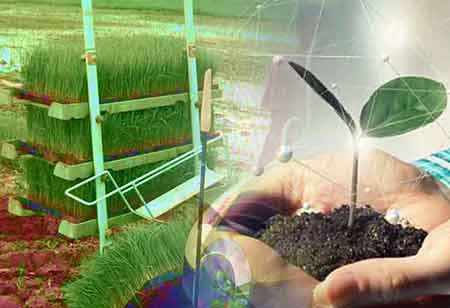Thank you for Subscribing to Agri Business Review Weekly Brief
Advantages Of Digitization In Agriculture
During the last decade, the execution of technology gave farmers the chance to drastically

By
Agri Business Review | Monday, June 27, 2022
Stay ahead of the industry with exclusive feature stories on the top companies, expert insights and the latest news delivered straight to your inbox. Subscribe today.
The three main elements that form the base of digitization in AG are the Internet of Things, nanotechnology, and digital education development.
Fremont, CA: Even if it still doesn't feel like the digital technology age is here, these large-scale innovations' effect on people's daily lives and the economy will be tremendous. Even at this time, experts call these transformations the "Fourth Industrial Revolution," parting these concepts from the inconsistent history of previous technological failures that attempted to improve the world.
Digitization in farming, and its benefits.
During the last decade, the execution of technology gave farmers the chance to drastically raise yield sizes by increasing output and automating input via the capabilities of AgTech. Still, experts are sure that it is necessary to automate and digitize some of the most vital processes in farming even more, such as planting and cultivation, to reap the benefits of optimal sustainability and gradual profitability.
It is critical to realize that digitization will support us meet the goal of sustaining our growing population, which is, of course, the most significant challenge we are facing due to the ever-increasing number of people on earth. Several solutions will allow us to increase sustainability.
For instance, innovations like precision agriculture are an excellent means of doing this. Still, it does need a slightly different approach than the standard historical/manual process of farming we are utilizing right now.
Suppose we fail to accomplish global adoption of new procedures like this one. In that case, improving the import/export experiences between leading countries will be challenging, which is the main factor impacting diverse food availability between countries.
Data indicates that countries that are the most prominent food providers thus far have undergone a technological farming revolution. For instance, the idea of extensive classical agriculture was subst
ituted by precision AG. Signify that systems for planting and cultivating crops are modified from manual and labor-intensive methods to data-based procedures that use robots, satellites, and computers to do all the heavy lifting.
Furthermore, instead of plowing, sowing, and fertilizing manually (as it was done throughout the history of agriculture), nowadays, farmers can calculate the number of required resources for each crop in their field using AgTech – this makes it possible to avoid over expenditure of raw materials, it increases yield sizes more effectively and improves sustainability. This proves the importance of digitization and how necessary it is to implement.
However, to succeed with precision agriculture and digitization, it is essential first to help farmers through three preparatory stages.
• The concept of automation – is the process of reengineering labor-intensive processes.
• We must do an excellent job of utilizing the capabilities of AgTech in terms of crop monitoring.
• The installation of sensors – is crucial for equipment maintenance.





